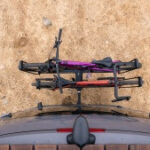Cycling computers are essential gadgets for modern cyclists. They use GPS to meticulously track your rides, gathering extensive data that can be analyzed instantly or later using various cycling apps. Whether you’re a casual rider or a serious athlete, a cycling computer can significantly enhance your cycling experience by providing valuable insights into your performance and routes.
While today’s market is flooded with feature-rich computers, many of which boast functionalities that go unused by the average cyclist, it’s important to choose one that fits your needs and riding style. For example, the Garmin Edge 1050 is almost a smartphone on your handlebars – complete with payment capabilities and even an electronic bell. Even more basic models like the Garmin Edge 130 plus come packed with training features and smartphone connectivity for alerts, heart rate monitors, and power meters.
This guide highlights 12 of the best cycling computers, carefully selected and rated by our experts. Our top recommendation is the Hammerhead Karoo 2, lauded for its exceptional touchscreen and future-proof Android operating system. Closely following is the Wahoo Elemnt Roam, praised for its user-friendly ecosystem, robust app support, and physical buttons, a feature preferred by many cyclists.
We also want to acknowledge the Garmin Edge 540 for its balanced features and reliability, offering everything you need without unnecessary extras. And for those prioritizing battery life, the Coros Dura stands out with its remarkably long battery life, making it a compelling option for endurance cyclists.
Quick Picks: Top Cycling Computers at a Glance
| # | Product | Best For | Image |
|---|---|---|---|
| 1 | Hammerhead Karoo 2 | Best Overall |  Hammerhead Karoo 2 Hammerhead Karoo 2 |
| 2 | Wahoo Elemnt Roam | Best All-Round | 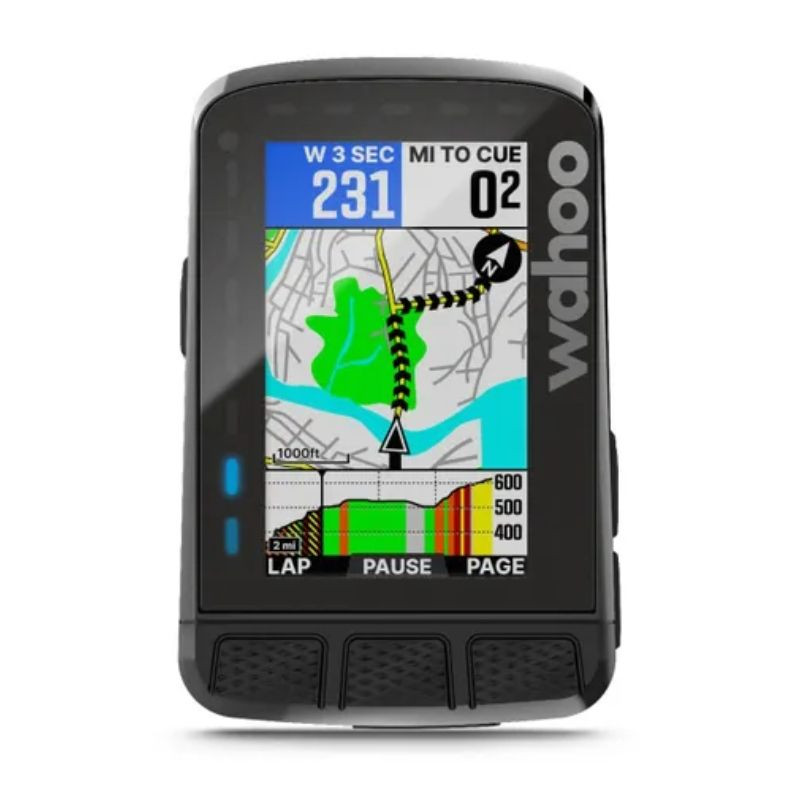 Wahoo Elemnt Roam Wahoo Elemnt Roam |
| 3 | Garmin Edge Explore 2 | Best for Navigation |  Garmin Edge Explore 2 Garmin Edge Explore 2 |
| 4 | Garmin Edge 1050 | Best Screen & Features |  vivid colour display of the garmin 1050 cycle computer vivid colour display of the garmin 1050 cycle computer |
| 5 | Garmin Edge 130 Plus | Best Budget | 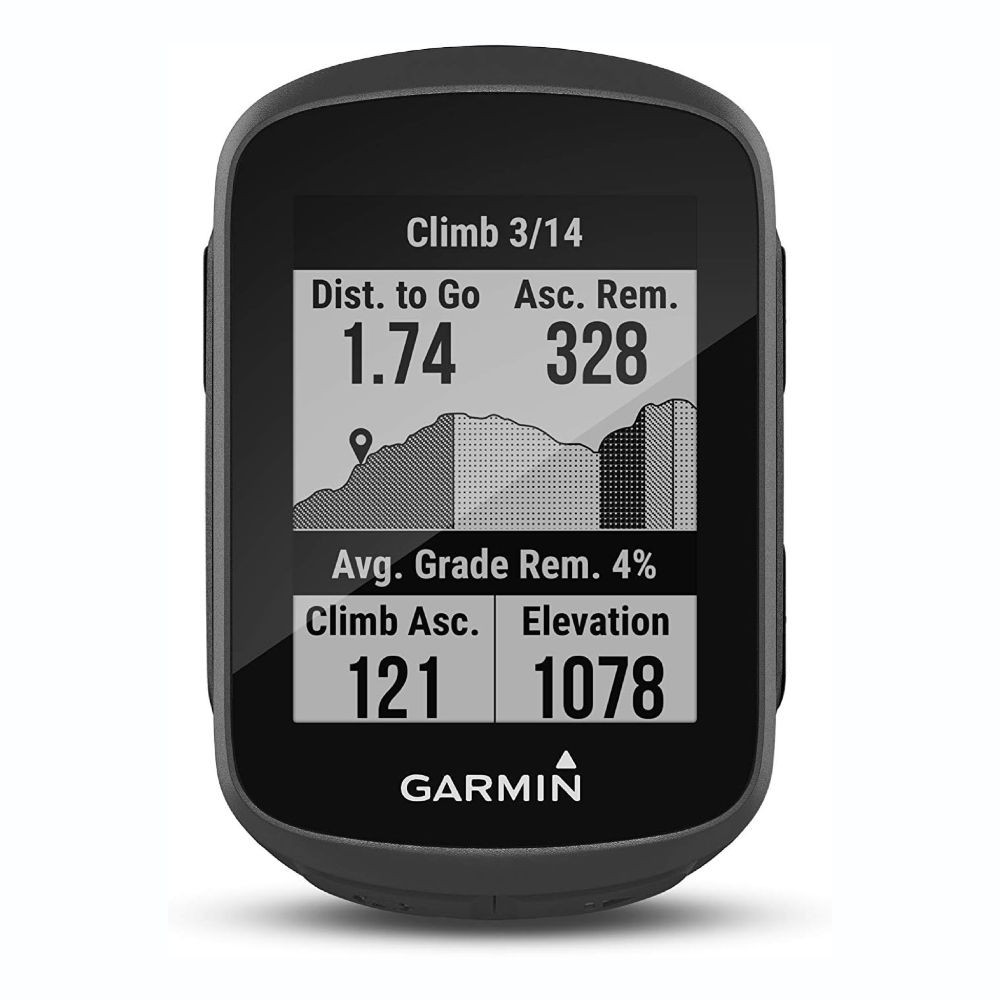 Garmin edge 130 stock image Garmin edge 130 stock image |
| 6 | Coros Dura | Best for Battery Life | 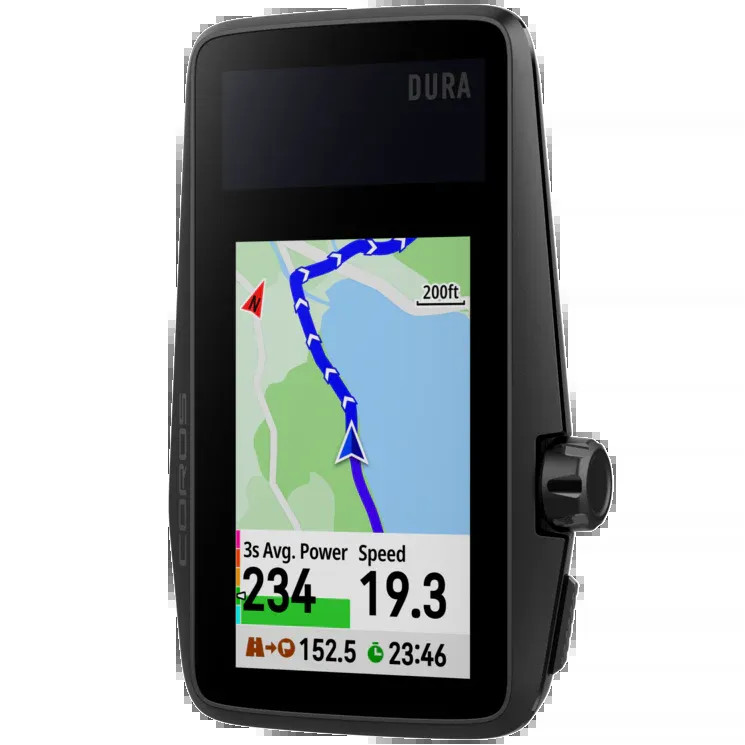 Coros dura with its watch like winder dial and 120 hours of battery life Coros dura with its watch like winder dial and 120 hours of battery life |
Detailed Reviews: Our Top Cycling Computer Picks
1. Hammerhead Karoo 2: The Best Overall Cycling Computer
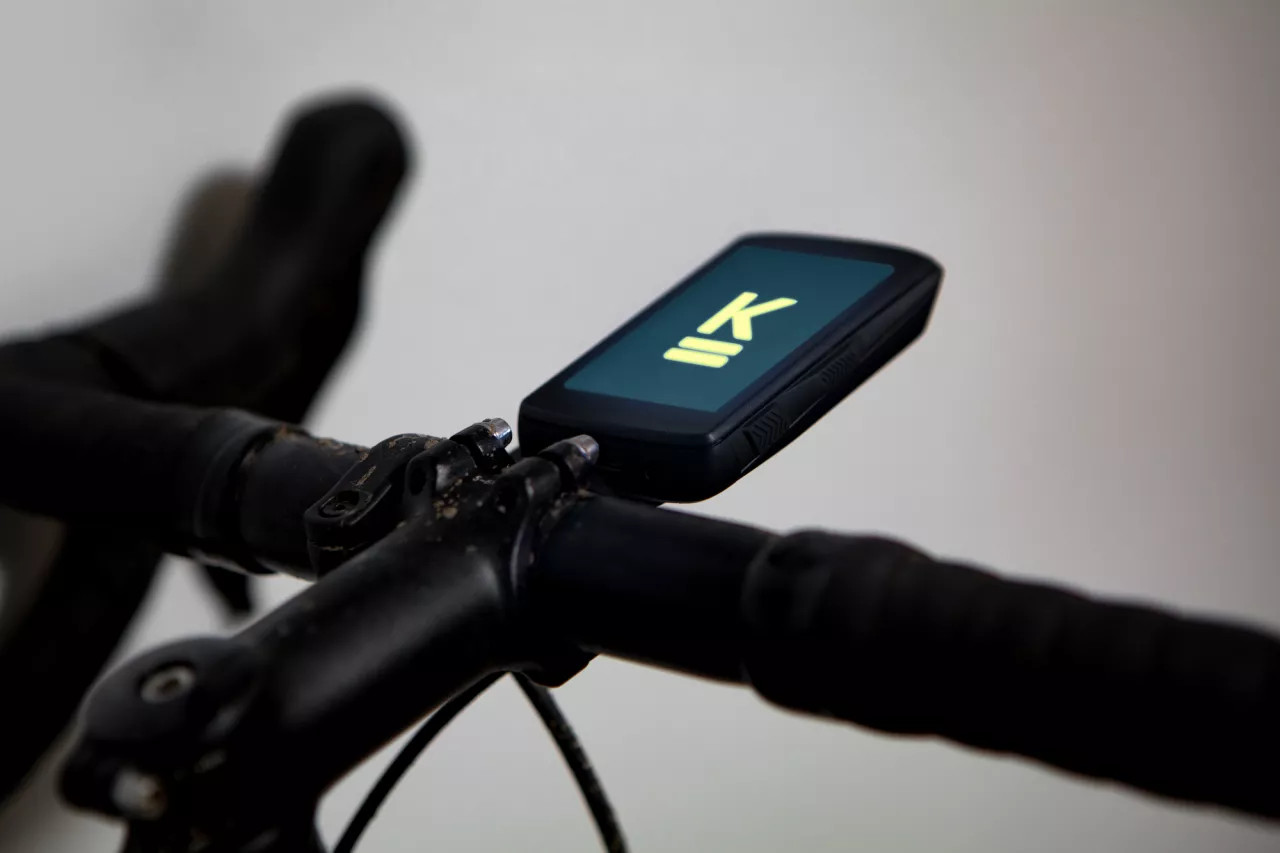 Hammerhead Karoo 2 GPS cycling computer
Hammerhead Karoo 2 GPS cycling computer
The Hammerhead Karoo 2 excels with its smartphone-like touchscreen, providing an unparalleled user experience.
(Image credit: Josh Ross)
Best Overall
The Hammerhead Karoo 2 stands out as the best overall cycling computer due to its blend of intuitive design and advanced technology. Its large, high-resolution touchscreen is remarkably responsive and easy to read in various lighting conditions. The Karoo 2 operates on an Android system, which brings the familiarity and fluidity of a smartphone to your cycling experience. This operating system not only makes it intuitive to use but also ensures regular software updates, enhancing its functionality and longevity.
Key Features and Specifications:
- Dimensions: 2.4″ x 0.76″ x 4.0″ (60.8mm x 19.3mm x 100.6mm)
- Touchscreen: Yes, multi-touch responsive
- Display: Color, 3.2″ (81.3mm) high-resolution
- Weight: 131g
- Battery Life: Up to 12 hours (claimed)
- Connectivity: Android OS, comprehensive maps, Bluetooth, ANT+, WiFi, GSM
Reasons to Buy:
- Exceptional Screen Resolution: Offers crisp and clear visuals, enhancing map readability and data display.
- Android-Based Functionality: Provides a user-friendly interface and seamless integration with apps.
- Responsive Multi-Touch Display: Navigation and interaction are smooth and intuitive, similar to smartphone use.
- Robust Mount System: Ensures the device is securely attached to your bike, even on rough terrains.
Reasons to Consider Alternatives:
- Battery Life: At up to 12 hours, the battery life is not the longest on the market, which might be a concern for ultra-endurance cyclists.
- Charge Port Dust Cover: The lack of a dust cover for the USB-C charge port could be a minor point of concern in very dusty or muddy conditions.
Since being acquired by SRAM, Hammerhead continues to innovate with the Karoo 2, setting it apart from competitors. Its Android operating system provides a distinct advantage, offering a level of user-friendliness and adaptability that proprietary systems often lack. The touchscreen is highly responsive, supporting pinch-to-zoom and smartphone-like navigation through menus and screens. Charging is also quick and convenient thanks to its USB-C port.
Read our full expert review: Hammerhead Karoo 2 Review
2. Wahoo Elemnt Roam: Best All-Round Cycling Computer
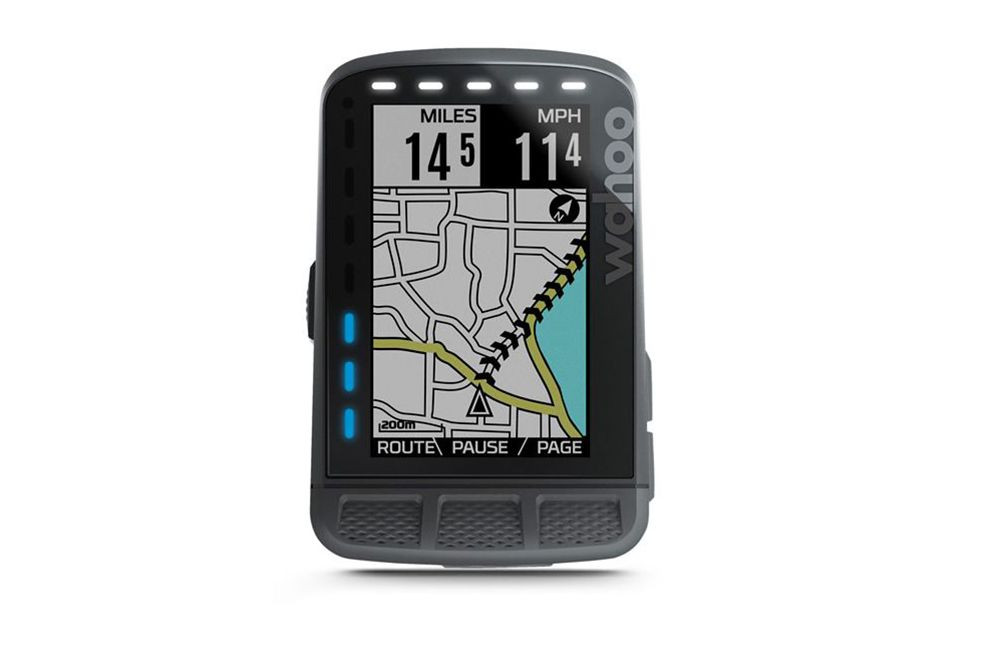 Wahoo Elemnt Roam
Wahoo Elemnt Roam
The Wahoo Elemnt Roam is designed with navigation as a priority, offering robust features for route finding and exploration.
(Image credit: Wahoo)
Best All-Round
The Wahoo Elemnt Roam is celebrated as the best all-round cycling computer, particularly appealing to riders who prefer physical buttons over touchscreens. This computer excels in training and navigation, providing a reliable and user-friendly experience. Wahoo’s ecosystem and app support are particularly strong, making setup, customization, and data analysis seamless.
Key Features and Specifications:
- Dimensions: 3.5″x2.3″x0.7″ (89mmx54.4mmx17.8mm)
- Touchscreen: No, button operated
- Display: Color, 2.7″ (68.6mm)
- Weight: 93.5g
- Battery Life: Up to 17 hours (claimed)
- Connectivity: Smartphone app integration for navigation, Bluetooth for alerts, speed/distance/time/elevation tracking, structured training support
Reasons to Buy:
- Cost-Effective: Often priced more competitively than its rivals, offering excellent value for money.
- User-Friendly and Stylish: Easy to use interface with a sleek design that looks great on any bike.
- Intuitive Route Planning: Simplifies creating and managing routes, making navigation straightforward.
- Excellent for Off-Road Riding: Robust navigation and durable build make it suitable for various terrains.
- Comprehensive Data Features: Tracks a wide range of metrics, providing detailed insights into your performance.
Reasons to Consider Alternatives:
- Rerouting Challenges: Rerouting on longer rides can be less intuitive compared to some competitors.
- Battery Life: While good, the battery life is not as long as some other computers in its category.
The Wahoo Elemnt Roam builds upon the strengths of the Elemnt Bolt, offering enhanced features in a slightly larger format. It covers all essential functionalities, including smartphone communication alerts, live tracking, and structured training. The absence of a touchscreen, replaced by physical buttons, is a deliberate design choice favored by many cyclists, especially those who ride in wet conditions or wear gloves frequently. The three main buttons are conveniently located at the bottom, making them easily accessible and more user-friendly than side-mounted buttons found on many GPS computers. While the battery life is slightly better than the Bolt, it doesn’t quite match the claimed endurance of some competitors.
Read our full expert review: Wahoo Elemnt Roam Review
3. Garmin Edge Explore 2: Best Value Cycling Computer for Navigation
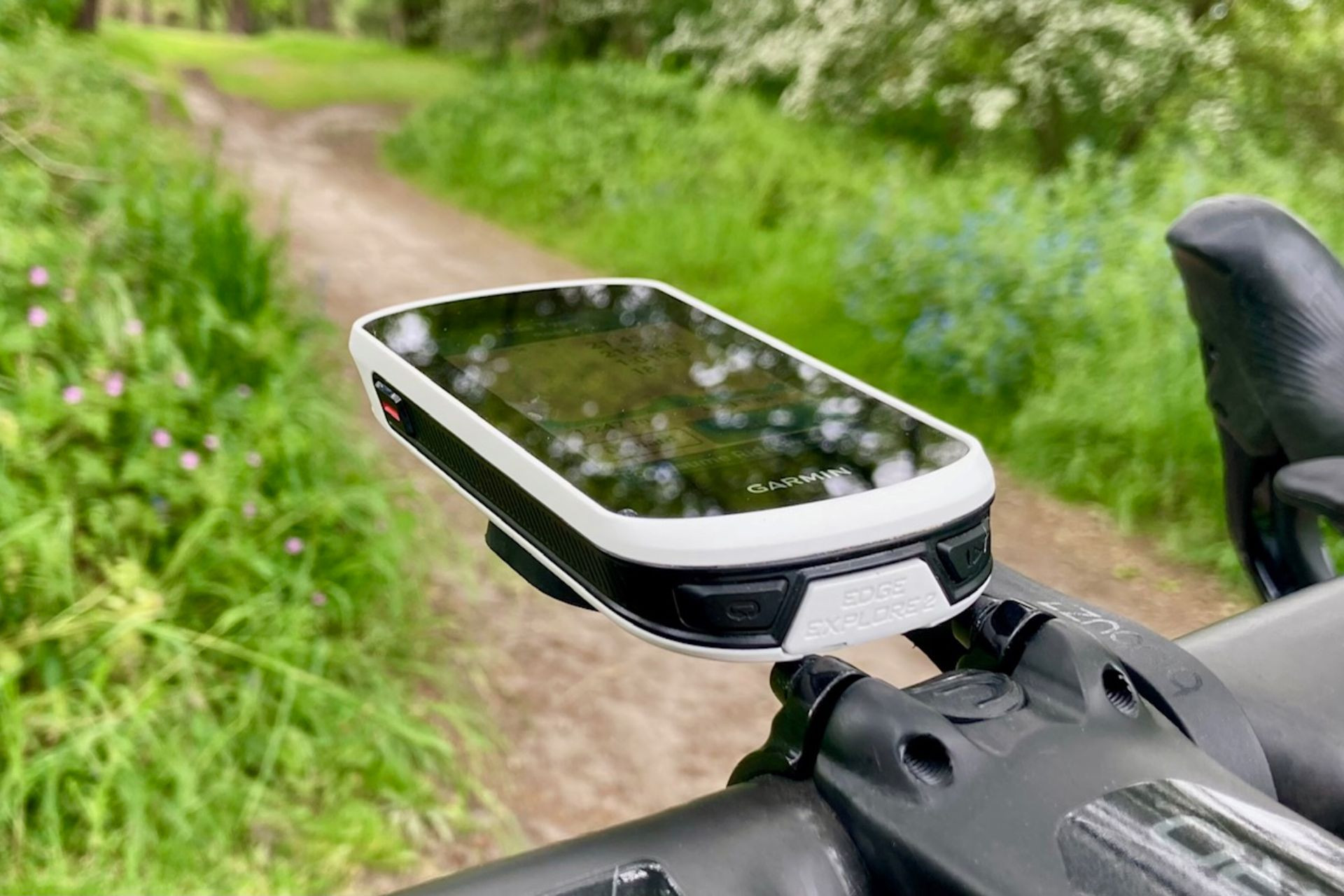 Garmin Edge Explore 2 cycling computer mounted on a bike
Garmin Edge Explore 2 cycling computer mounted on a bike
The Garmin Edge Explore 2 is designed for cyclists who prioritize navigation and ease of use at a reasonable price.
(Image credit: Simon Smythe)
Best Value for Navigation
The Garmin Edge Explore 2 excels as the best value cycling computer for navigation, targeted at cyclists who prioritize route finding over intense training metrics. While it omits some advanced features like Strava Live Segments, it still supports power meters and other sensors, making it versatile for various riding styles. Its affordability compared to higher-end models makes it an attractive option for budget-conscious cyclists.
Key Features and Specifications:
- Dimensions: 106.1x 55.7 x 20.6mm
- Touchscreen: Yes
- Display: Color, 3in
- Weight: 105g
- Battery Life: 16 hours
- Connectivity: Bluetooth, ANT+, 16GB storage, IPX7 waterproof
Reasons to Buy:
- Large, Clear Display: Provides excellent visibility of maps and data, enhancing navigation.
- Easy Setup and Use: Straightforward interface and simple operation make it accessible for all users.
- Excellent Navigation Capabilities: Reliable and accurate navigation features ensure you stay on course.
- Sufficient Training Metrics: Offers enough data for most cyclists who want to track their performance without needing advanced analytics.
Reasons to Consider Alternatives:
- Limited Activity Profiles: Only offers three activity profiles, which might be restrictive for multi-discipline athletes.
- No Strava Live Segments: Lacks Strava Live Segments for those who enjoy competitive riding segments.
- Mount Not Included: Does not come with an out-front mount, which is often preferred for better screen visibility.
The Edge Explore 2 serves as a more accessible alternative to the feature-packed Edge 1040 Solar. It focuses on essential navigation features without overwhelming users with advanced training tools. Although it lacks Strava Live Segments, it maintains compatibility with Bluetooth and ANT+ sensors, Garmin Connect, Strava, and smart notifications. It also provides basic training metrics, including post-ride ‘Highlights’ like VO2 max and recovery time when used with a heart rate monitor and power meter. The Edge Explore 2 is praised for its ease of setup, user-friendliness, and affordability, making it ideal for everyday cyclists.
Read our full expert review: Garmin Edge Explore 2 Review
4. Garmin Edge 1050: Best Screen and Features in a Cycling Computer
 vivid colour display of the garmin 1050 cycle computer
vivid colour display of the garmin 1050 cycle computer
The Garmin Edge 1050 boasts a vibrant, high-resolution display, setting a new standard for screen quality in cycling computers.
Best Screen & Features
The Garmin Edge 1050 is recognized for having the best screen and a comprehensive suite of features, positioning it as a top-tier, albeit premium, cycling computer. It pushes the boundaries of what’s expected in bike computer technology, offering functionalities that rival smartphones, including Garmin Pay and even an electronic bell. The standout feature is its all-new vivid color display, which significantly reduces glare and enhances visibility in all lighting conditions.
Key Features and Specifications:
- Dimensions: 60.2 x 118.5 x 16.3 mm (2.4″ x 4.7″ x 0.6″)
- Touchscreen: Yes
- Display: Color, 88.9 mm (3.5″) diagonal, 480 x 800-pixel resolution
- Weight: 161 g (5.7 oz)
- Battery Life: Up to 20 hours (demanding use), up to 60 hours (battery save mode)
- Connectivity: GPS, GLONASS, Galileo, barometric altimeter, gyroscope, accelerometer, ambient light sensor, magnetometer, Bluetooth, ANT+, Wi-Fi
Reasons to Buy:
- Market-Leading Touchscreen: Offers exceptional responsiveness and clarity, making interaction seamless.
- Feature-Packed: Includes a vast array of features, from advanced navigation to performance metrics and smart functionalities.
- Electronic Bell: A unique and practical feature for urban cyclists, enhancing safety and convenience.
- Garmin Ecosystem: Integrates smoothly with the Garmin ecosystem, providing access to a wide range of apps and services.
Reasons to Consider Alternatives:
- Price: Significantly more expensive than alternatives like the Hammerhead Karoo 2, making it a premium investment.
- Garmin Pay Utility: The practicality of Garmin Pay for cyclists is questionable, especially since most riders still carry a phone.
- Feature Redundancy: Many features are also available on less expensive Garmin models like the Edge 1040 and 830.
- Battery Life: Shorter battery life compared to the Edge 1040 and 840, especially the solar versions.
The Edge 1050 is Garmin’s flagship model, packed with features that cater to the most demanding cyclists. It includes precise turn-by-turn navigation with auto-rerouting, powered by multi-band GNSS using GPS, GLONASS, and Galileo. Training and performance features are extensive, encompassing power guide, stamina insights, cycling dynamics, and more. However, many of these features are also available on Garmin’s less expensive models, prompting the question of value. The key differentiator is its stunning screen – a super-bright, high-resolution display that outperforms other Garmin computers in terms of color vibrancy and clarity, especially in bright sunlight. Additional unique features include Garmin Pay and a built-in speaker for voice commands and alerts, including a digital bike bell.
Read our full expert review: Garmin Edge 1050 Review
5. Garmin Edge 130 Plus: Best Budget-Friendly Cycling Computer
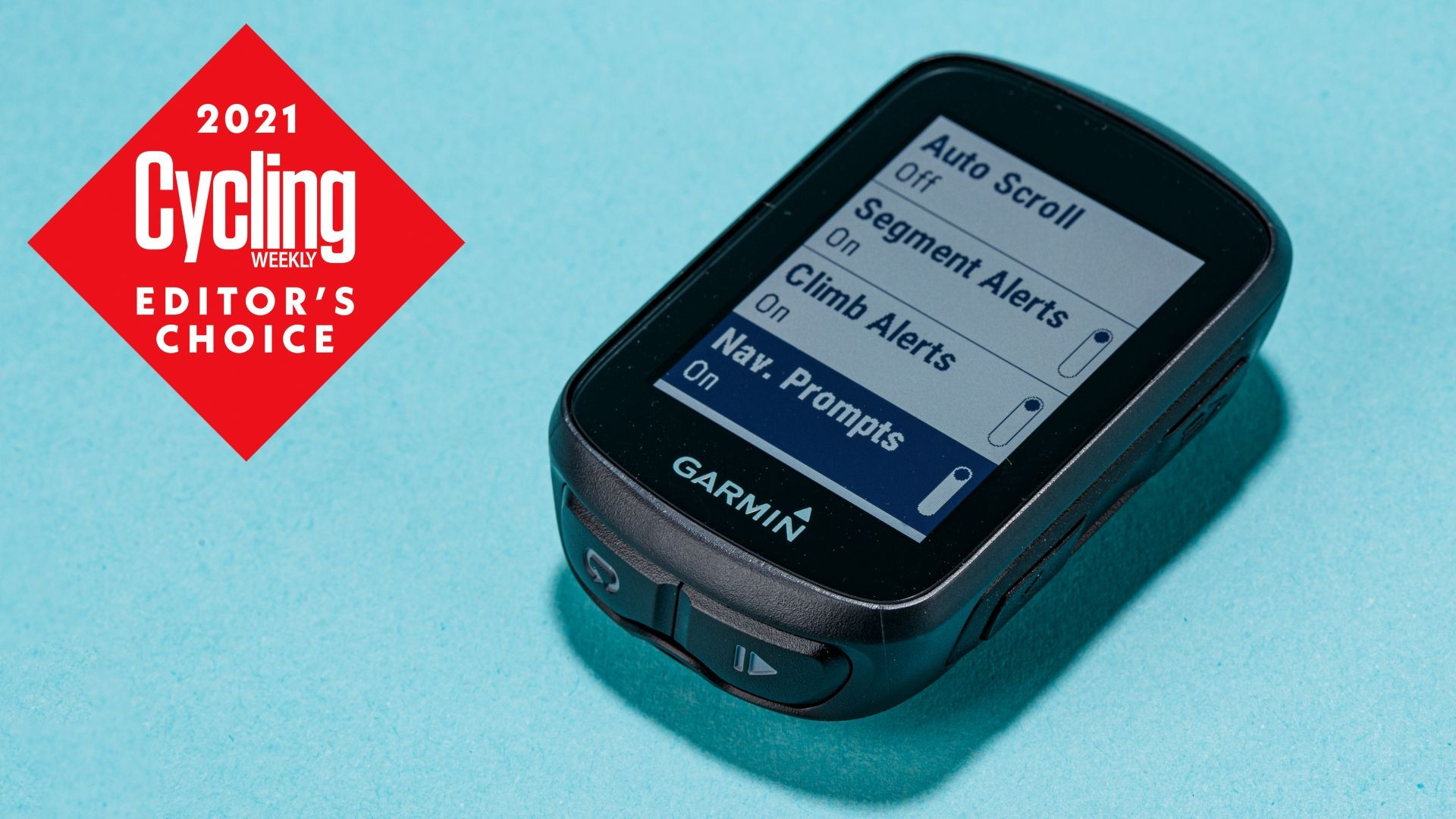 Garmin Edge 130 plus
Garmin Edge 130 plus
The Garmin Edge 130 Plus is a minimalist yet capable cycling computer, ideal for riders on a budget.
(Image credit: Future)
Best for Those on a Budget
The Garmin Edge 130 Plus is celebrated as the best budget cycling computer, offering essential features in a compact and user-friendly package. It is designed for cyclists who need the basics done well without the hefty price tag of premium models. Despite its minimalist design, it retains key functionalities and is surprisingly capable for its price point.
Key Features and Specifications:
- Dimensions: 4.1 x 6.3 x 1.6 cm
- Touchscreen: No, button control
- Display: Black and white, 27.0 x 36.0 mm; 1.8″ diagonal (45 mm)
- Weight: 33 g
- Battery Life: Up to 12 hours (claimed)
- Connectivity: Power, lights, live track, GPS, navigation, text messages, ANT+, Bluetooth
Reasons to Buy:
- Small and Stylish: Compact size looks great on any bike without being obtrusive.
- Crisp, Easy-to-Read Screen: Despite being black and white, the screen is sharp and legible in various conditions.
- Button Controls: Physical buttons are reliable and easy to use, even with gloves.
- Top-End Features at a Lower Price: Includes features typically found in more expensive computers, offering excellent value.
Reasons to Consider Alternatives:
- Black and White Mapping: Maps are basic and lack color detail, which may be less intuitive for navigation.
- Breadcrumb Trail Navigation: Navigation uses a simple breadcrumb trail, which is less detailed than full mapping systems.
The Edge 130 Plus has earned accolades, including a Cycling Weekly Editor’s Choice Award, highlighting Garmin’s dominance in the cycling computer market even at the budget level. It is stripped back to essentials but remains highly functional. Using buttons instead of a touchscreen, it is easy to set up and operate, even while riding. It pairs seamlessly with ANT+ and Bluetooth accessories like heart rate monitors and power meters, making it suitable for performance-focused riders and those tracking Strava segments. While it lacks the advanced features of higher-priced models, it provides excellent value for cyclists who need core functionalities without breaking the bank.
Read our full expert review: Garmin Edge 130 Plus Review
6. Coros Dura: Best Cycling Computer for Unmatched Battery Life
 Coros dura with its watch like winder dial and 120 hours of battery life
Coros dura with its watch like winder dial and 120 hours of battery life
The Coros Dura sets a new benchmark for battery life, making it ideal for ultra-endurance cycling and long adventures.
Best for Battery Life
The Coros Dura stands out as the best cycling computer for battery life, boasting an incredible 120 hours of use on a single charge. This makes it perfect for ultra-endurance cyclists and anyone who values extended ride times without frequent charging. Its innovative solar charging capability further extends battery life, adding up to two hours of ride time for every hour in direct sunlight.
Key Features and Specifications:
- Dimensions: 99.5 x 60.8 x 15.7mm
- Touchscreen: Yes
- Display: Color, 2.7 Inch
- Weight: 102g
- Battery Life: 120 Hours (without solar charging), solar charging adds up to 2 hours per hour in direct sun
- Connectivity: Heart Rate Monitors, Power Meters, Indoor Trainers, Speed & Cadence Sensors, Garmin Varia Vehicle Radar, E-Bike Gears, Shimano/SRAM Electronic Drivetrain Systems
Reasons to Buy:
- Insane Battery Life: Offers up to 120 hours of battery life, eliminating battery anxiety for long rides.
- Watch-Style Winder: Crown dial is easy to use, even when wearing thick gloves, improving usability in cold conditions.
- Compact Design: Despite its long battery life, it remains compact and comparable in size to other high-end computers.
Reasons to Consider Alternatives:
- New Ecosystem: As a newer entrant, the Coros ecosystem may still be developing compared to more established brands like Garmin and Wahoo.
- Initial Hiccups: Some users have reported initial software issues, which Coros is actively addressing with updates.
The Coros Dura is a relative newcomer in the cycling computer market but has quickly made a name for itself with its exceptional battery performance. It is lightweight and compact, comparable in size to the Garmin Edge 1040 and Hammerhead Karoo 2, despite its vastly superior battery life. The watch-style crown is a unique feature, making it easy to navigate menus and settings, especially with gloves on. While some initial software glitches were noted during early testing, Coros has been proactive in releasing updates and fixes. The Dura requires settings to be configured primarily through its smartphone app, which differs from Garmin and Wahoo devices that allow more on-device configuration. However, the unparalleled battery life is a game-changer, particularly for long-distance cyclists.
Read our full expert review: Coros Dura First Impressions
7. Garmin Edge 540: Best Value Garmin Cycling Computer
 garmin edge 540 cycling computer mounted to a disc brake road bike and sat on an outfront style mount
garmin edge 540 cycling computer mounted to a disc brake road bike and sat on an outfront style mount
The Garmin Edge 540 balances performance and value, making it a compelling choice in the Garmin lineup.
(Image credit: Future)
The Best Button Operated Garmin
The Garmin Edge 540 is highlighted as the best button-operated Garmin computer, striking a balance between advanced features and value. It improves upon its predecessor, the Edge 530, by enhancing performance and incorporating key training and navigation tools. It is positioned as the entry point into Garmin’s performance-focused cycling computers, despite the existence of the more affordable Edge 130 Plus.
Key Features and Specifications:
- Dimensions: 5.8cm x 8.5cm and 1.97cm
- Touchscreen: No, button operated
- Display: Color, 66mm
- Weight: 80 grams
- Battery Life: Up to 26 hours (claimed)
- Connectivity: Bluetooth, ANT+, WiFi, Android, iPhone
Reasons to Buy:
- Phenomenal Battery Life: Offers a long battery life of up to 26 hours, suitable for extended rides and multi-day events.
- ClimbPro Feature: Provides detailed ascent data, helping riders manage their effort on climbs effectively.
- Reliable and Durable: Known for its robustness and consistent performance in various conditions.
- Extensive Screen Options: Offers numerous customizable data screens, allowing riders to tailor the display to their needs.
- Excellent Connectivity: Supports Bluetooth, ANT+, and WiFi for seamless integration with sensors and devices.
- Performance Enhancement Features: Includes Garmin Coach and other tools to help improve training and performance.
Reasons to Consider Alternatives:
- Gradient Stat Issues: Some users have reported inaccuracies with gradient readings.
- No Touchscreen: Lacks a touchscreen interface, which some riders prefer for ease of use, although buttons are favored by others.
- Price: More expensive than some rivals, although it offers a rich feature set for the price.
The Edge 540 significantly upgrades the performance of the Edge 530 while retaining popular features. It includes ClimbPro, course demands, multi-band GNSS, and power guide, making it a robust training tool. The addition of Garmin Coach, also found in higher-end models like the Edge 840 and 1050, elevates its training capabilities. Mapping is enhanced with popular roads and trails and a broader catalog of points of interest, including practical additions like water fountains, particularly useful in warmer climates. While it lacks a touchscreen, the button operation is favored by many, especially in challenging weather conditions or when wearing gloves. Available in a Solar version, the Edge 540 offers compelling features that might make it a more attractive option than the Edge 840 for some users.
Read our full expert review: Garmin Edge 540 Full Review
8. Garmin Edge Explore 2: Best Value Cycling Computer for Navigation (Revisited)
 Garmin Edge Explore 2 cycling computer mounted on a bike
Garmin Edge Explore 2 cycling computer mounted on a bike
(Image credit: Simon Smythe)
Best for Navigating on a Budget
We revisit the Garmin Edge Explore 2 to reiterate its position as the best value option for navigation. It serves as an antidote to the high-end, feature-heavy Edge 1040 Solar, offering essential navigation and tracking features at a more accessible price point. It is aimed at riders who prioritize navigation and ease of use over advanced training metrics and performance analytics.
Key Features and Specifications:
- Dimensions: 106.1x 55.7 x 20.6mm
- Touchscreen: Yes
- Display: Color, 3in
- Weight: 105g
- Battery Life: 16 hours
- Compatibility/features: Bluetooth/ANT+, 16GB storage, IPX7 waterproof
Reasons to Buy:
- Big, Clear Display: Enhances map visibility and ease of navigation.
- Easy to Set Up and Use: Simple interface and intuitive operation make it user-friendly for all cyclists.
- Excellent Navigation: Reliable and accurate navigation ensures you stay on course.
- Enough Training Metrics for Most People: Provides sufficient data for general fitness tracking and ride analysis.
Reasons to Consider Alternatives:
- Limited Activity Profiles: Only three activity profiles may not suffice for cyclists engaged in multiple disciplines.
- No Out-Front Mount Included: The absence of an out-front mount is a minor inconvenience, requiring a separate purchase.
The Edge Explore 2 contrasts with the Edge 1040 Solar by focusing on core navigation functionalities and user-friendliness. It costs significantly less than the 1040 and is designed for riders who don’t require extensive performance metrics or structured workouts. While it lacks Strava Live Segments, it supports Bluetooth and ANT+ sensors, Garmin Connect, smart notifications, and basic training metrics. It excels in navigation and is praised for its ease of setup and affordability, making it an excellent choice for most everyday cyclists.
Read our full expert review: Garmin Edge Explore 2 Review
9. Garmin Edge 1040 Solar: Top-Tier Cycling Computer for Training
 Image shows a Garmin Edge 1040 Solar cycling computer.
Image shows a Garmin Edge 1040 Solar cycling computer.
(Image credit: Future)
Best Cycling Computer for Training
The Garmin Edge 1040 Solar is positioned as the best cycling computer for training, offering a suite of advanced features and solar charging capabilities. It is designed for serious cyclists and athletes who demand the most comprehensive data and performance metrics. The solar charging feature is a standout, extending battery life and making it ideal for long training sessions and endurance events.
Key Features and Specifications:
- Dimensions: 2.3″ x 4.6″ x 0.8″ (59.3 x 117.6 x 20.0 mm)
- Touchscreen: Yes
- Display: Color, 3.5″ (88.9 mm) diagonal
- Weight: 133 g (4.7 oz)
- Battery Life: Up to 45 hours (with solar charging)
Reasons to Buy:
- Solar Recharging: Extends battery life significantly, especially in sunny conditions, reducing the need for frequent charging.
- Smart Pacing Features: Power Guide and other pacing tools help optimize training and performance during rides.
- Intuitive User Experience: Revamped user interface makes navigation and data access easier than previous Garmin models.
- Great GPS Accuracy: Provides precise location tracking and reliable data for accurate ride analysis.
Reasons to Consider Alternatives:
- Price: One of the most expensive cycling computers on the market, making it a significant investment.
- Power Meter Dependency: To fully utilize its training features, a power meter is almost essential, adding to the overall cost.
- Solar Charging Variability: Solar charging effectiveness depends on sunlight conditions and may not be as significant in cloudy regions or seasons.
The Edge 1040 Solar’s solar charging capability is a major highlight, potentially adding up to 42 minutes of battery life per hour in battery saver mode under optimal sunlight conditions. It features a revamped user interface that is more intuitive and customizable, allowing easy access to ride history, training schedules, and weather forecasts. Features like Power Guide help riders manage their effort by providing pacing strategies tailored to their routes. While expensive, it is packed with features for serious training and performance analysis, making it a top choice for dedicated cyclists.
Read our full expert review: Garmin Edge 1040 Solar Review
10. Bryton Rider 420 E: Good Features at a Reasonable Price
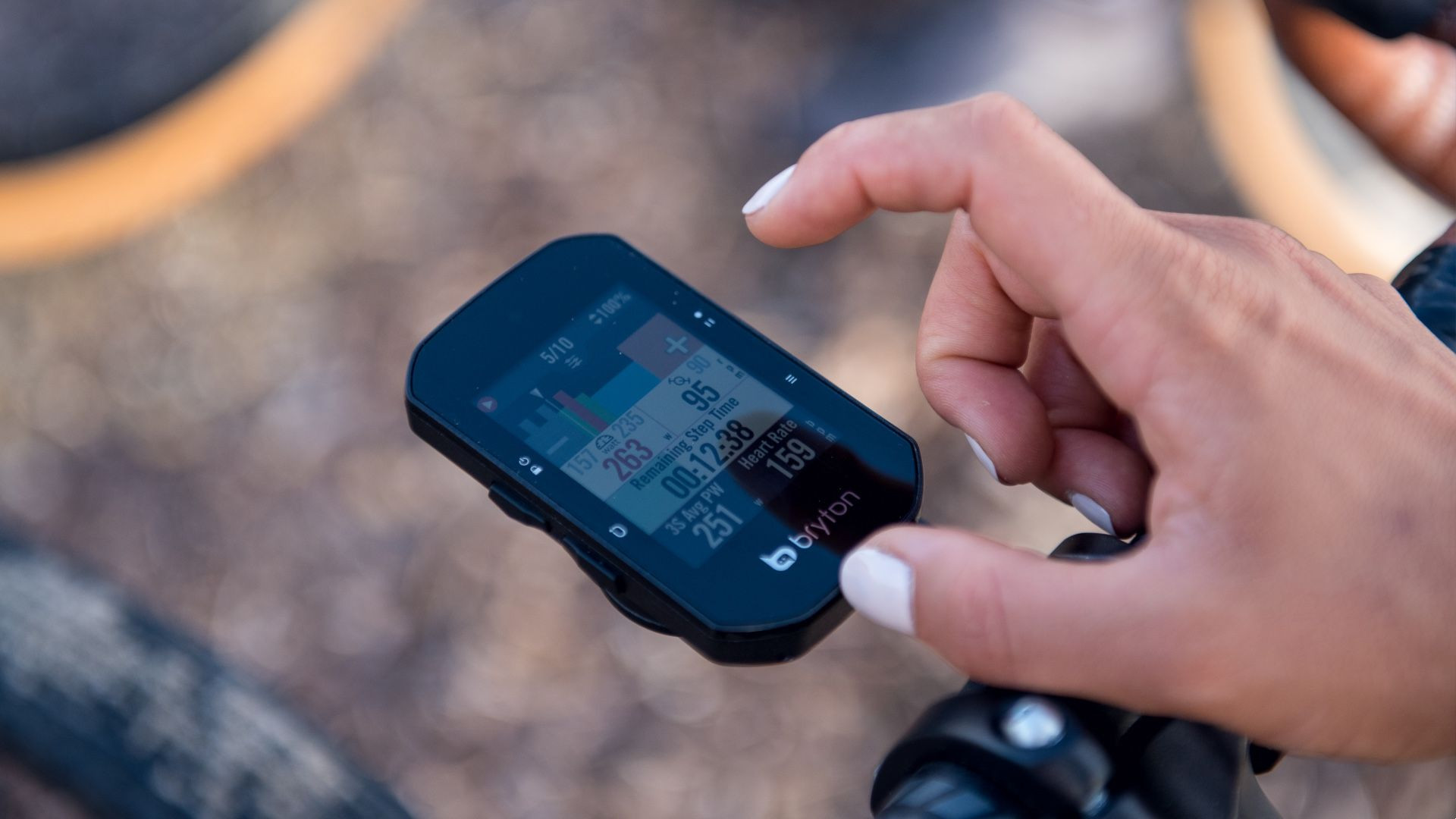 Bryton Rider S500
Bryton Rider S500
The Bryton Rider 420 E offers a solid set of features at a competitive price point, appealing to budget-conscious riders.
(Image credit: Bryton)
Good Features at a Reasonable Price
The Bryton Rider 420 E is praised for offering good features at a reasonable price, making it a budget-friendly alternative to more expensive brands. It provides a comprehensive set of functionalities, including sensor support and advanced data metrics, without the premium cost. It is suitable for riders who want more than basic features but are mindful of their budget.
Key Features and Specifications:
- Dimensions: 9.4 x 9.4 x 4.57 cm
- Touchscreen: No, button operated
- Display: Black and white, 2.3″ / 5.8cm
- Weight: 227g
- Battery Life: 35 hours (claimed), 12-14 hours (tested)
- Connectivity: Power, GPS Navigation, text alerts, Bluetooth, ANT+
Reasons to Buy:
- Great Value: Offers a lot of features for its price, making it accessible to budget-conscious cyclists.
- Easy to Set Up and Use: Straightforward setup and user-friendly interface enhance usability.
- Good Battery Life (Claimed): Claimed 35-hour battery life is impressive, although tested battery life is lower.
- Aesthetically Pleasing: Has a visually appealing design that looks good on a bike.
Reasons to Consider Alternatives:
- Awkward Button Placement: Button placement can be less convenient to use compared to other computers.
- Breadcrumb Trail Navigation: Navigation is limited to breadcrumb trails, lacking detailed maps.
- Companion App Usability: Companion app setup and usage can be less intuitive than apps from competitors.
- Tested Battery Life: Tested battery life is significantly lower than the claimed 35 hours, closer to 12-14 hours in real-world use.
The Bryton Rider 420 is a budget-friendly option that supports a wide range of sensors and provides advanced data metrics like normalized power and TSS. It offers turn-by-turn directions using a breadcrumb trail on a black and white screen. Setup can be done on the device or through the companion app, which some users find less intuitive. Despite some drawbacks, it offers a functional set of features at a competitive price, making it a good option for cyclists on a tight budget.
Read our full expert review: Bryton Rider 420 Review
11. Cateye Quick Wireless Cycle Computer: Best Cycling Computer for Simplicity
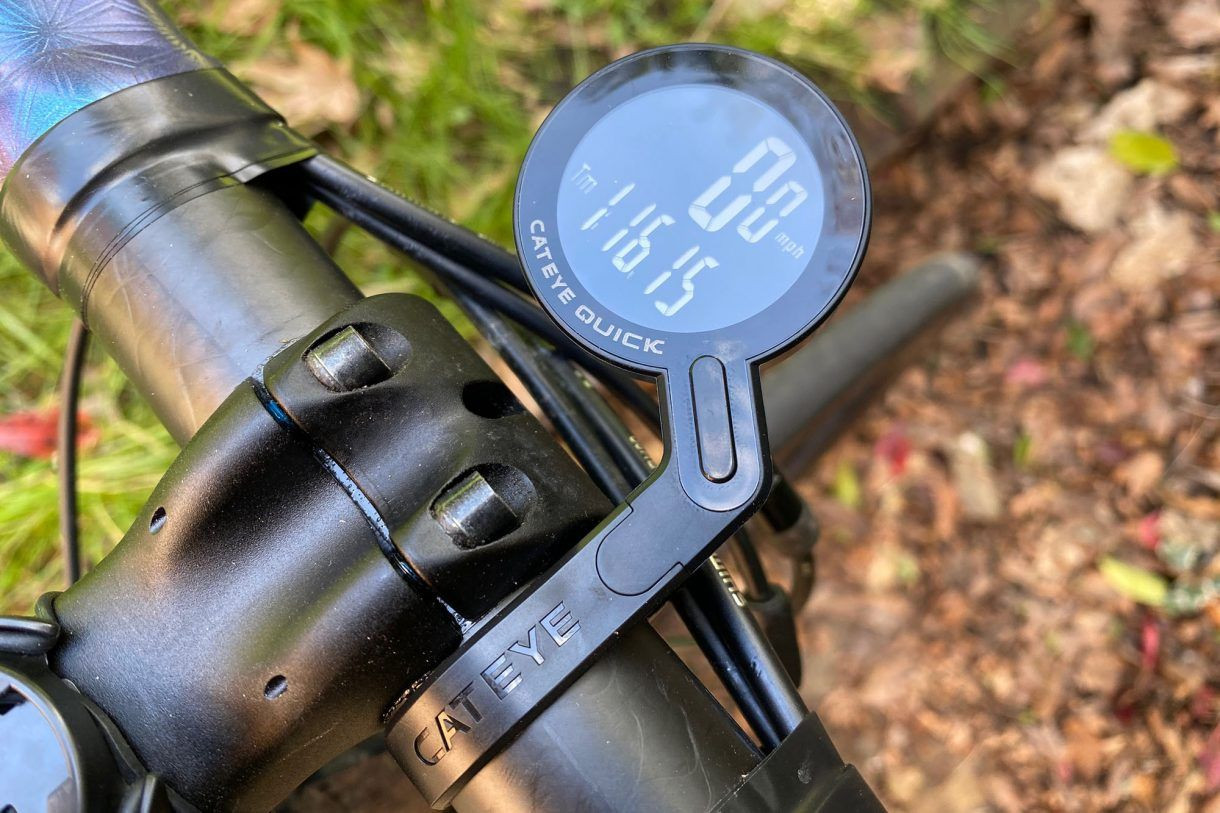 Cateye quickwireless computer
Cateye quickwireless computer
The Cateye Quick Wireless computer is designed for simplicity and ease of use, ideal for cyclists who prefer basic functionality.
(Image credit: James Bracey)
Best for Simplicity
The Cateye Quick Wireless Cycle Computer is celebrated for its simplicity, offering essential cycling metrics in an easy-to-use and reliable device. It is perfect for cyclists who prioritize straightforward functionality without the complexities of GPS and advanced features. Its simplicity makes it highly user-friendly and dependable for basic ride tracking.
Key Features and Specifications:
- Dimensions: 93.5 X 54 X 36mm
- Touchscreen: No, button operated
- Display: Black and white, size not specified
- Weight: 24g
- Battery Life: Approximately 1 year (based on one hour of daily use)
- Connectivity: Wireless speed transmitter
Reasons to Buy:
- Well-Designed and Easy-to-Read Screen: Clear display makes it easy to view data while riding.
- Simple to Use: Straightforward operation with minimal setup required, enhancing user experience.
- Visually Attractive: Sleek and aesthetically pleasing design adds to its appeal.
- Long Battery Life: Battery life measured in years, minimizing maintenance and battery concerns.
Reasons to Consider Alternatives:
- No Data Export: Cannot export ride data for analysis, limiting data tracking capabilities.
- No GPS Tracking: Lacks GPS functionality, meaning no route recording or navigation.
- Limited Functionality: Offers basic metrics only, without advanced features like mapping, training metrics, or smart connectivity.
The Cateye Quick Wireless computer focuses on core cycling metrics like speed, distance, and time, mirroring the accuracy of more advanced GPS units in these basic measurements. It is easy to read at speed and mounts conveniently in an out-front position. Battery life is exceptionally long, lasting about a year with daily use. However, it lacks GPS and connected features, making it unsuitable for riders who need route tracking or data analysis. Its strength lies in its simplicity and reliability for cyclists who want basic metrics without added complexity.
Read our full expert review: Cateye Quick Review
How We Test Cycling Computers
Cycling Weekly employs a team of experienced testers who rigorously evaluate cycling products across various price points and specifications. Our testing process for cycling computers involves extensive miles both outdoors and on turbo trainers to thoroughly assess performance. We consider numerous factors, including ease of setup and use, range of functions (navigation and training tools), battery life, charging time, weather resistance, and value for money. Our detailed testing methodology ensures consistent, in-depth, and reliable product reviews, reflected in our scoring system. You can learn more about our testing process on our How We Test page.
FAQs About Cycling Computers
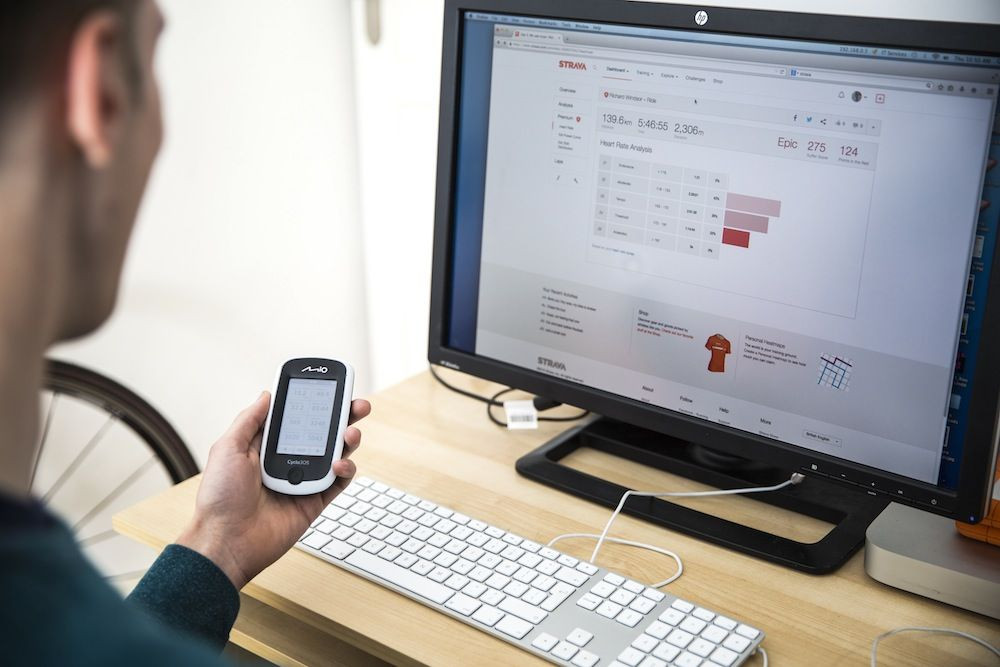 best cycling computers
best cycling computers
What features can I expect from an entry-level non-GPS cycling computer?
Entry-level non-GPS cycling computers are very affordable, often costing about the same as a takeout meal. These basic computers typically measure essential metrics like speed and cadence using wired or wireless sensors attached to the bike frame. They calculate average speed and cadence based on sensor data. Wireless models offer a cleaner look without frame-mounted wires. These computers are ideal for budget-conscious riders who need basic metrics and are not concerned with GPS tracking or online data uploads.
What features can I expect from entry-level GPS cycling computers?
Entry-level GPS cycling computers are designed to be user-friendly, compact, and lightweight. They excel at tracking ride statistics like distance, time, speed, and lap times using GPS. Navigation is generally not included at this level. Most units feature auto-pause and resume functions and ANT+ connectivity for external sensors like heart rate monitors. Data is displayed on a black and white screen, usually in two or three customizable rows. Ease of use is prioritized over extensive customization. Some models offer basic alerts for reaching target metrics and virtual competitor features to compare performance against previous rides.
What features will I find on a mid-range GPS cycling computer?
Mid-range GPS cycling computers offer enhanced functionality and often include features like heart rate monitor or cadence sensor bundles. They provide broader sensor compatibility, including power meter data. Larger color screens display more data, and storage capacity is increased. Control options may include buttons or touchscreens, and mapping and navigation functionalities are often added, ranging from basic breadcrumb trails to pre-installed basemaps. Barometric altimeters improve altitude data accuracy. Bluetooth smartphone synchronization enables call and text alerts, weather updates, and wireless data uploads without USB cables, as well as live ride tracking for sharing progress online.
What features can I expect to find on a high-end GPS bike computer?
High-end GPS cycling computers represent the pinnacle of technology, offering a vast array of features. They typically include color touchscreens, advanced mapping and turn-by-turn navigation, and comprehensive training features. WiFi connectivity facilitates data transfer and route sharing. Integration with electronic drivetrains, Strava Live Segments, and third-party training apps like TrainingPeaks is common. Battery life is significantly improved, often around 20 hours. Multi-satellite network support (GLONASS, BeiDou, Galileo) enhances GPS accuracy and reliability.
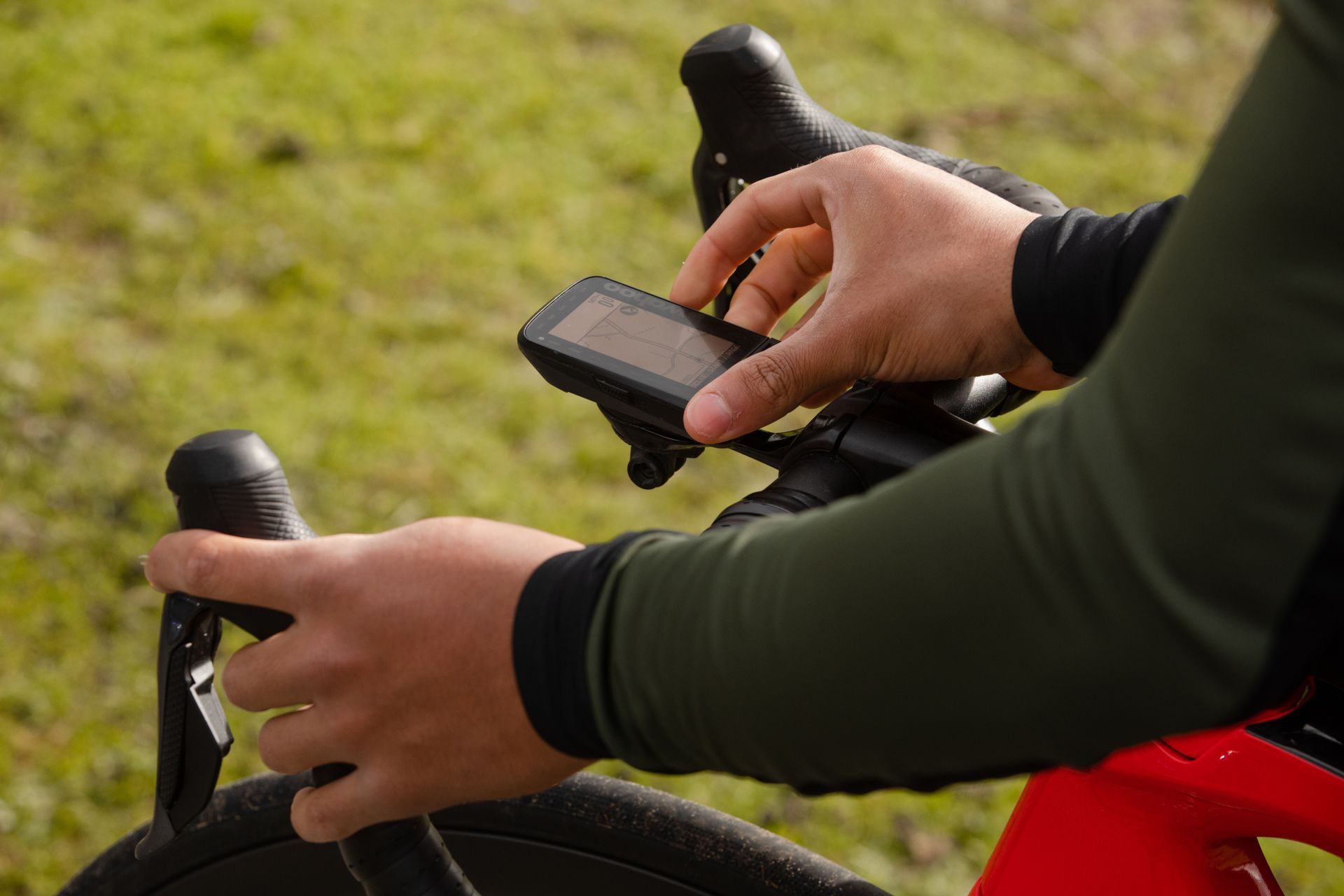 Best Cycling Computers
Best Cycling Computers
(Image credit: Future)
How can I use a bike computer to analyze my ride data?
Even basic cycling GPS computers allow data download to manufacturer-provided apps and websites for post-ride analysis. These platforms offer ride analysis tools, training plan integration, and social features, although quality varies. Data can often be uploaded to third-party platforms like Strava or TrainingPeaks for more detailed analysis. Using peripheral sensors like cadence sensors or power meters enriches data collection and analysis capabilities.
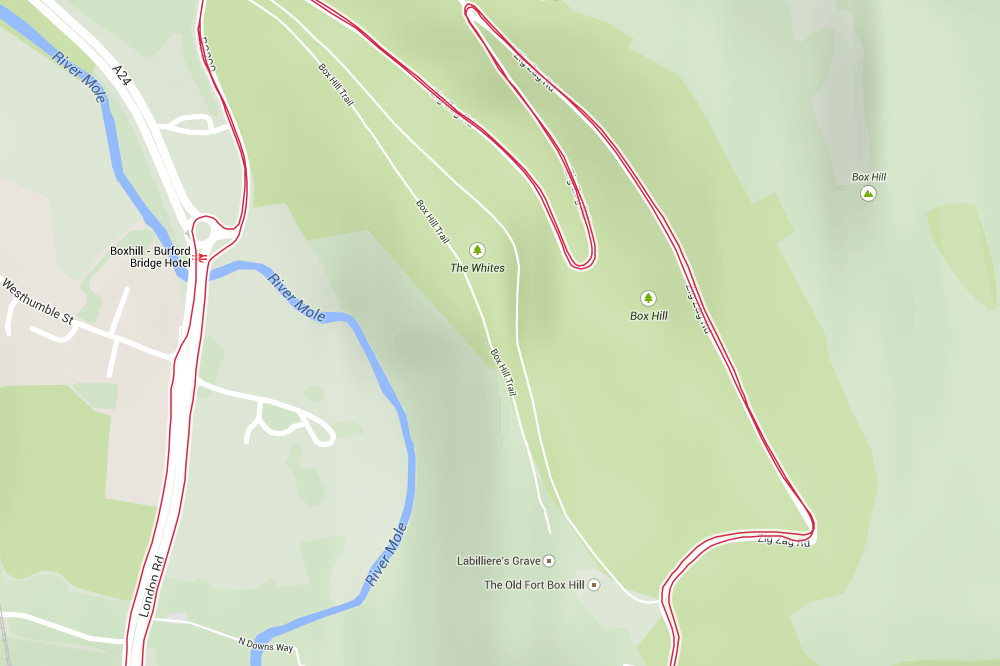 best cycling computers
best cycling computers
What are the best alternatives to a cycling computer?
Smartphones with built-in GPS offer an alternative to dedicated cycling computers. While GPS accuracy may be slightly less precise, smartphone apps like Strava provide many functionalities of basic computers. Smartphones can be mounted on handlebars using phone mounts or carried in pockets. However, water resistance and battery life can be concerns, especially with prolonged screen use. Another option is to use a smartphone for data collection and transmit it via Bluetooth to a bar-mounted display unit like the Cateye Padrone, conserving phone battery and keeping it protected. GPS-enabled sports watches are also popular, especially among multi-sport athletes, offering cycling functionalities and connectivity to peripheral sensors. Some models include bar mounts for bike use, providing versatility both on and off the bike.
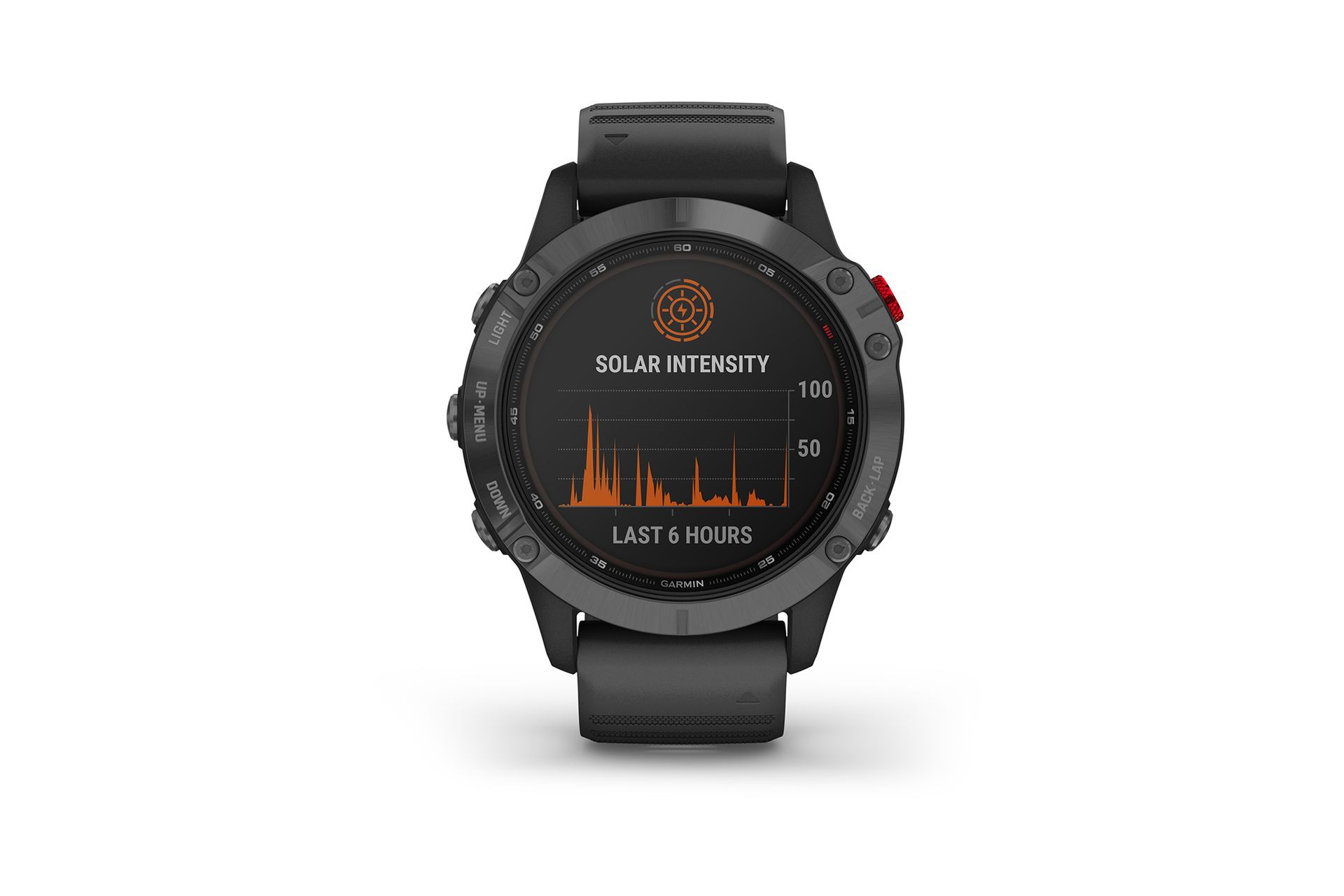 Garmin Fenix Pro 6 Solar
Garmin Fenix Pro 6 Solar
(Image credit: Garmin)

